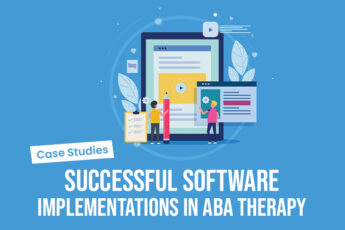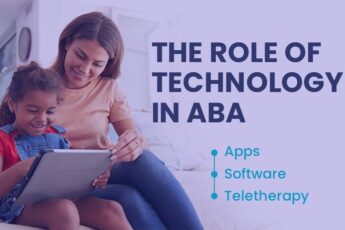The field of Applied Behavior Analysis (ABA) is constantly evolving, and with it, the tools and resources available to practitioners. Integrating new technologies into ABA practices is no longer just a trend, but a necessity to optimize outcomes and improve the lives of individuals with autism and other developmental disabilities.
Why Embrace Technology?
Technology offers many benefits for ABA:
- Increased Efficiency: Streamline tasks like data entry, scheduling, and reporting. This frees up practitioner time for direct client interaction.
- Enhanced Data Collection & Analysis: Collect data more accurately and efficiently. This improves understanding of client progress and leads to better intervention decisions.
- Personalized Learning Experiences: Create tailored learning environments. These adjust to individual needs, maximizing engagement and progress.
- Improved Communication & Collaboration: Communicate seamlessly between practitioners, parents, and stakeholders. This promotes collaboration and keeps everyone informed.
- Increased Accessibility: Bring ABA services to remote areas and underserved populations. This expands access to crucial support.
Specific Technologies Transforming ABA Practices
- Teletherapy: Video conferencing allows for remote ABA services, especially beneficial for individuals in rural areas or with limited mobility.
- Interactive Software & Apps: Engage clients with personalized learning experiences, gamifying skills acquisition and increasing motivation.
- Data Management Platforms: Collect, analyze, and report data efficiently. This provides insights into client progress and intervention effectiveness.
- Wearable Technology: Track activity levels, sleep patterns, and other data. This provides real-time insights into client behaviors and informs interventions.
- Virtual Reality (VR): Immersive environments help practice social skills, manage anxiety, and address other challenges in a safe setting.
Considerations for Successful Integration
- Choosing the Right Tools: Select technology that aligns with your practice and client needs. Consider accessibility, affordability, and user-friendliness.
- Training & Support: Ensure staff are adequately trained to use the technology. Provide ongoing support for any technical difficulties.
- Privacy & Security: Implement strong measures to protect client data and comply with privacy regulations.
- Ethical Considerations: Prioritize client well-being and ethical considerations. Ensure technology enhances the therapeutic process.
The Future of ABA & Technology
The future of ABA is linked to technology. Expect even more innovative tools and approaches to emerge, revolutionizing how we understand and support individuals with autism.
Conclusion
At Digitalinfobytes, we recognize technology’s potential in ABA. We’re committed to developing innovative solutions that empower practitioners to provide high-quality, personalized care.
Our team works with ABA professionals to develop effective, user-friendly solutions that seamlessly integrate into existing workflows.
We believe technology can empower individuals with autism. Together, we can shape the future of ABA and build a more inclusive and supportive world.







Leave a Comment